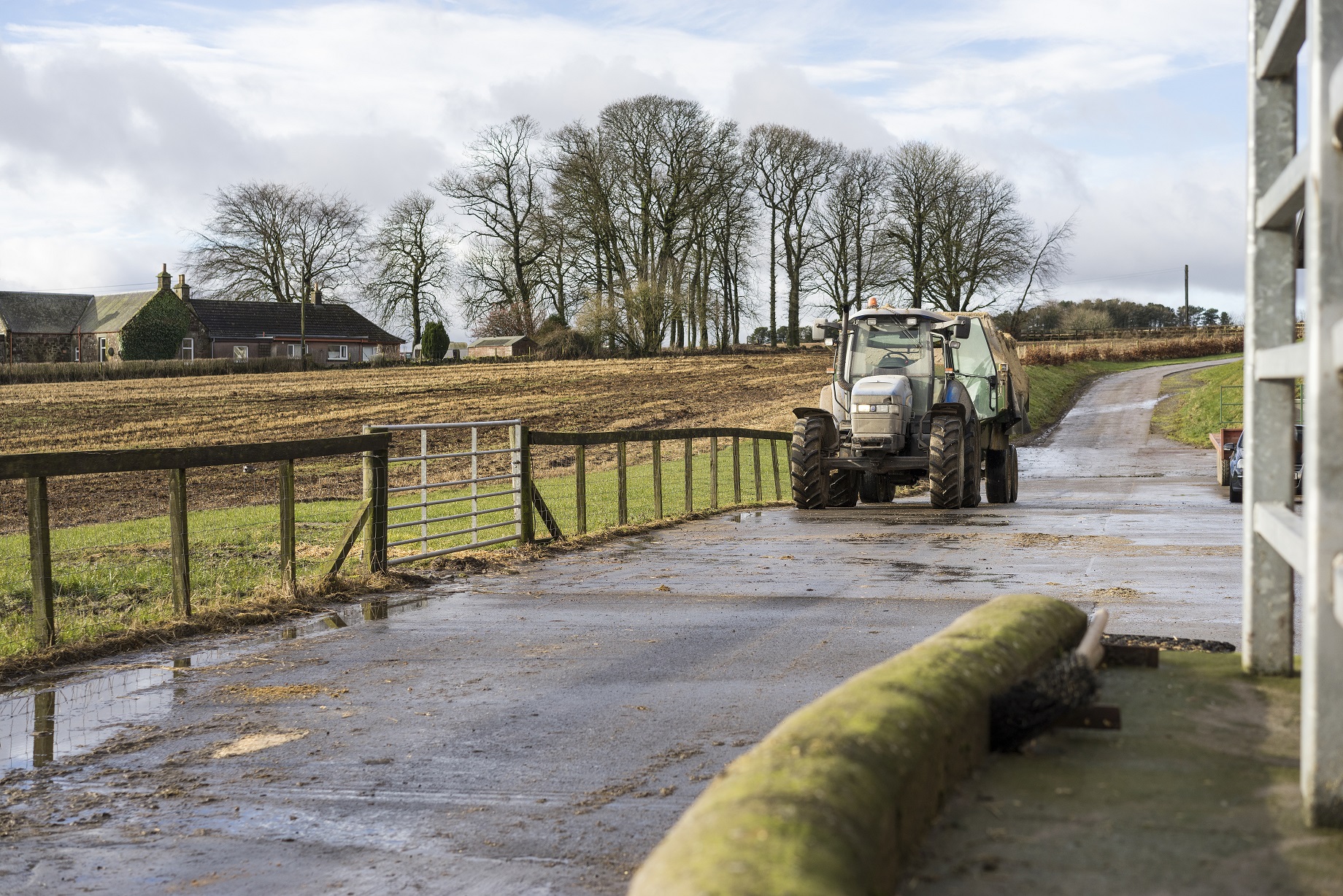Five key changes in the Budget for rural businesses

Following the Autumn Budget statement where the Chancellor pronounced that the era of austerity is coming to an end, we look further into the detail to assess the key changes impacting businesses operating in the rural sector.
1. Annual investment allowance (AIA) – the sky is the limit
Currently up to £200,000 of qualifying expenditure can obtain 100% tax relief, this limit having been in place since 2016. The Chancellor announced this is rising to £1 million from 1 January 2019 for a two-year period as a means of boosting business investment.
This is a welcome change for those larger businesses who can find themselves capped with the existing £200,000 per annum limit, this temporary increase to the limit will see significantly faster tax relief obtained where spend exceeds £200,000.
Where a business’ accounting year-end spans the 1 January 2019 when the limit increases and likewise when the temporary extension to the limit reverts back to £200,000 (i.e. on 1 January 2021), then care will be required to ensure that you pro rata the relief available. For example, the maximum AIA relief available for businesses spanning the 1 January will be calculated as follows:
The AIA entitlement will be based on the £200,000 cap for the portion of the accounting period falling before 1 January 2019.
The AIA entitlement will be based on the temporary £1 million annual cap for the portion of the period falling on or after 1 January 2019.
The totals of these will be added together to give the maximum AIA limit for that accounting period. Any amounts in excess of this will be relieved at the main rate (18%) or special rate (8%, reducing to 6% from April 2019) as applicable.

2. Structures and buildings allowance (SBA) – the new Agricultural Buildings Allowance
The announcement by the Chancellor that a new capital allowances relief was being introduced as of 29 October 2018 for the construction of new buildings and conversions and renovations, is being hailed in the press as the new Industrial Buildings Allowance. For those in the farming and landed community, the comparison is the SBA being the new Agricultural Buildings Allowance.
So, what does this mean for a farmer incurring expenditure on a new farm shed for example?
Prior to 2011 farmers were able to obtain tax relief (by way of a deduction from their taxable profits) over 25 years on the cost of an agricultural building. Since the Agricultural Buildings Allowance was abolished no tax relief was available on the cost incurred on a building unless expenditure within the building was separately identified as plant and machinery which formed part of the integral features of a building, such as a water or heat supply. Otherwise the spend was a sunk cost with no tax relief obtained by the business for undertaking such an investment.
The SBA will give tax relief on eligible expenditure at a 2% flat rate over a period of up to 50 years. The Government’s hope is that this will encourage investment in the construction and renovation of buildings for commercial use.
Land and dwellings will not be eligible for SBA. Costs in preparing land for constructing a building/structure will however be eligible. In terms of dwellings, whilst HMRC are committed to ensuring the exclusion of buildings with residential use from the relief, they are seeking views on whether there are certain types of buildings or activities with residential use that exceptions should be made for.
Finally, the Government have advised that if contracts have been entered into prior to 29 October to construct buildings/structures then SBA will not be available. There are anti-avoidance provisions in place to prevent contracts currently entered into from being redrafted.
This relief is welcome news for the sector and evidence that the representations made by the agricultural bodies in recent years have not been in vain.

3. Entrepreneurs’ Relief – still around but changes afoot
There was an initial intake of breath amongst the business world at one point in the Chancellor’s speech when he advised that he had received representations from numerous parties demanding the end of this relief. Fortunately, the Chancellor went on to say his view was Entrepreneurs’ Relief (ER) plays a vital role in supporting enterprise within the UK.
The Chancellor did however tighten up on the conditions for ER to be available to ensure this relief is not being claimed by those who do not hold a true material stake in a business.
The relief reduces the amount of Capital Gains Tax on sales of a business or shares in someone’s personal company by applying a reduced 10% tax rate on up to £10 million of lifetime gains. For rural business owners looking to sell their business the relief is invaluable and reduces the ultimate tax take on a disposal by 50% (i.e. a 10% CGT rate is obtained as opposed to 20%).
Of the two announcements made to ER yesterday, one relates to the definition of personal company and therefore is relevant if your business is incorporated, i.e. operated as a Company, the other announcement applies to all types of business disposal and increases the period during which all relevant conditions must be met for ER to be available on a disposal.
For an individual disposing of shares in their company, currently they must have 5% of the ordinary share capital and 5% of the voting rights for the company to be termed a ‘personal company’ and so within the conditions for ER. As of 29 October 2019, the individual will also require to have 5% of the company’s distributable profits and 5% of the assets available for distribution to equity holders in a winding up. This is to ensure that someone has a true stake in a business and is taking real risk as opposed to shareholdings simply being engineered such that multiples of ER can be obtained.
The second change sees the minimum period during which all conditions must be met to be eligible for ER increased from one year to two years as of 5 April 2019. It is therefore no longer sufficient for the conditions to be met for one year only, it must be at least two years. Special rules apply where a business has ceased before 29 October 2018 and the assets used in that business are sold in the three years after cessation of the business.

4. Personal Allowance increase and basic rate limit increase – caution to Scottish taxpayers
The Government had an objective in place to increase the personal allowance to £12,500 by 2020, instead the Chancellor brought this forward and announced a lifting in the personal allowance to £12,500 from 5 April 2019. Currently the personal allowance is £11,850, as of 6 April 2019 up to £12,500 of taxable income can be earned free of income tax. This increase in the personal allowance, saves a basic rate taxpayer £130 a year. The personal allowance is tapered once a person’s adjusted income exceeds £100,000 and so for some this increase in the personal allowance will not have an impact.
Whilst the Chancellor also announced an increase in the basic rate limit (i.e. the rate up to which you pay basic rate tax) from £34,500 to £37,500 this may only benefit some Scottish taxpayers. Tax rates and bands for earned income (e.g. employment, self-employment, pensions and rental income) lie with the Scottish Parliament and so we will need to wait to see what is announced in the Scottish Budget on 12 December to find out if a similar increase to the basic rate will apply.

5. Principal Private Residence Relief – further restrictions made
A relief exists within the UK tax legislation to relieve up to 100% of the Capital Gains Tax arising when someone disposes of their ‘main residence’. This relief has come under scrutiny in recent years with accusations being made that individuals are abusing the relief and claiming it against properties which have not met the definition of being someone’s main residence.
As part of countering any tax leakage in this area, the Chancellor announced that two further changes would be made to the relief as follows:
The final period of exemption, whereby relief is given regardless of occupation, is to be reduced from 18 months to 9 months. A few years back this was 36 months and has been steadily decreased in recent years by the Government.
Lettings relief is also to be reformed making it more restrictive and only available if the owner of the property is in ‘shared occupancy’ with a tenant. Previously the relief operated to give a deduction of a maximum £40,000 of gain per owner if the home had been rented out at some point.
For those in the rural sector, it is not uncommon to live in different properties at different times, particularly within farming enterprises and landed estates. Care is needed to ensure capital gains on the sale of properties previously used as a main residence are managed going forward, as the reduction and restriction to exemptions available within the relief will see a likelihood of increased tax arising on such sales, particularly where the main residence has been occupied by a tenant at some point.

The key takeaway
Overall, the message from the Budget for those in business is a positive one, with continued support being given to enterprise through reliefs such as the increased Annual Investment Allowance and creation of a new Structures and Buildings Allowance. As to how quickly business owners will seek to make use of these reliefs and increase investment in their enterprises remains to be seen, particularly given the continued uncertainty around Brexit.
